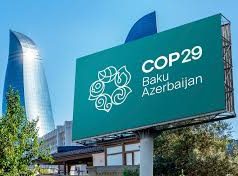CSR: How Collaboration Can Help Fashion Companies to Reduce Emissions
Low prices and unprecedented demand are fuelling the growth of “fast fashion”. This takes trends from the runway to consumers in record time. The problem is that, in the process, fashion is putting tremendous pressure on the environment through water use, pollution, waste and carbon emissions. Apart from this it also has negative social impacts such as unsafe labour conditions for garment workers.
In order to contain the pressure of the growing industry, many big brands and companies are stepping up and setting ambitious greenhouse gas (GHG) reduction targets that are in line with what the latest climate science says is needed to keep global temperature rise between 1.5°C and well-below 2°C.
For the benefit of these companies, World Resources Institute and the Science Based Targets initiative has released new guidance for companies in the sector—including retailers, brands, finished goods manufacturers, and mills—with recommendations on how to set science-based targets and case studies on best practices in target setting and strategies for achieving reductions.
Following are 3 takeaways from these guidelines:
Cleaning up the Supply Chain
Companies can set the most aggressive reduction targets for emissions from their own operations (i.e., scope 1 and 2 emissions), since this is where they have the most control.
Collaborations across Supply Chains
Since apparel and footwear suppliers usually serve multiple customers, brands and retailers can have limited ability to individually influence suppliers. To get suppliers to change, companies will have to come leverage their influence together with fellow sustainability-minded peers to pursue common goals. Brands and retailers also need to work with their suppliers in emerging economies to support them in aggressively deploying energy efficiency and renewable energy.
Apart from this, brands and retailers can also play an important role in helping suppliers overcome financing barriers. For example, Levi Strauss & Co. (LS&Co.) is expanding the Partnership for Cleaner Textiles (PaCT), a public-private partnership that provides suppliers with technical expertise and access to low-cost financing to support sustainable energy and water investments. LS&Co. also has a program which provides suppliers with access to low-interest trade financing based on how well they score on LS&Co.’s Terms of Engagement.
Data Collection and Performance Assessment
High-quality supplier-specific data is needed in order to track progress towards targets in the supply chain. Brands and retailers often have limited ability to gather data from suppliers—they may not have enough influence, and suppliers may not be able to trace the commodities they buy to a specific farm. Even when commodities are traceable, it is uncommon for some producers, such as farmers, to collect their own emissions data.
That’s why collaboration and knowledge-sharing to promote transparency and traceability through partnerships and open-source tools matter. For example, Espirit, Gap, Inditex, New Balance, PUMA and Target are openly identifying their Chinese suppliers on a map that visualizes real-time and historical trend data on air pollution, soil contamination and wastewater for more than 15,000 major industrial facilities.
Thank you for reading. Please drop a line and help us do better.
Regards,
The CSR Journal Team












